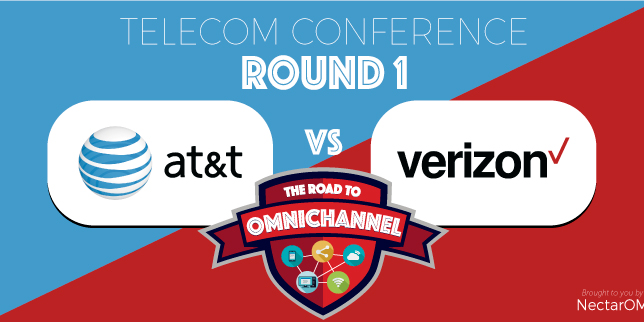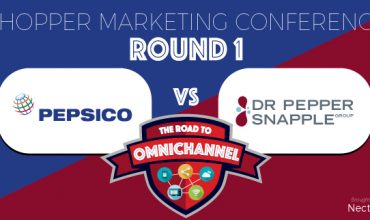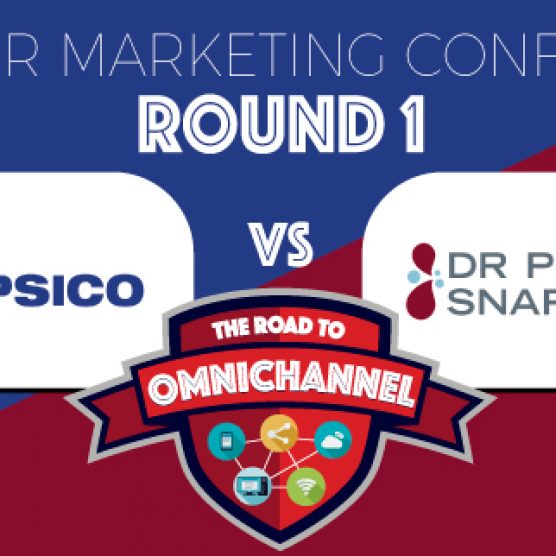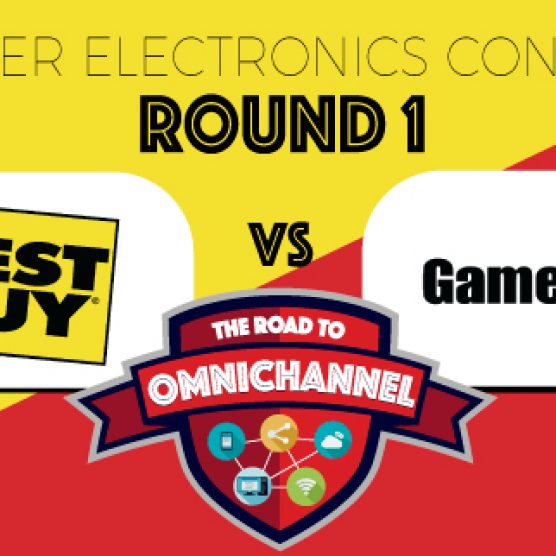The Road to Omni Channel: AT&T vs Verizon

Telecom giants, AT&T and Verizon, squared off in Game 2 of the 2016 NectarOM Road to Omni Channel Tournament and proved safe, steady defense wins games – especially when you’re playing your mirror image. It seems like an oxymoron to say a triple overtime game wasn’t exciting, but that was the case until AT&T ran a surprise play in the last seconds to win 73-71.
The Play-By-Play
Some would say this game was as boring as watching paint dry, but if you’re a fan of fundamentals and you don’t like the flashy style that seems to be taking over marketing then you probably loved it. These institution’s omnichannel marketing is steeped in legacy and you have to respect the way they’ve committed to playing their own style.
Right from the tip you could see both teams were going to let the game come to them since neither showed any offense focused on helping a new prospect through the buying process. The most personalization either team showed was regional promotional pricing. Verizon did get slightly better production from their desktop web and mobile web channels, but the difference from AT&T’s was marginal at best.
It was more like watching twins in a choreographed dance or a chess match than an omni channel shoot out. No one lead by more than three the entire game and the back-and-forth scoring made you think they traded playbooks and coaching strategies.
These companies are arguably the most digital brands in the world, but surprisingly, the most personalization and omni channel success showed up in their brick and mortar experience. In both cases, the store has evolved and their experimentation with use-based positioning was helpful for decision-making. Their staff were equally educated on the products, plans and promotions, but the clienteling apps at their fingertips filled in any gaps that may have existed. While it was a decent experience, neither party offered anything “breakthrough” like Apple did many years ago.
In the end, it appeared as though the game would have to end in a tie, but AT&T saved a player for overtime that Verizon didn’t have an answer for at all. Email put AT&T on it’s back and scored 18 unanswered points over the course of the three overtimes. With ten seconds left in the third overtime, AT&T scripted an “abandoned cart” play. Recognizing what people had placed in their online shopping carts and then following up with an email to remind them was the only example of responding to a prospect’s shopping journey needs. It was a fairly pedestrian play, but it was executed flawlessly and the resulting layup proved to be the game deciding shot.

Key Stats – A Tale of Two Games
When we look at how AT&T and Verizon did at applying omni channel marketing you had to ask the question, was it for prospects or customers? If it was the latter, both companies had an endless number of sites, apps, billing tools, support methods, etc. That said, the omni channel efforts didn’t really inspire as much as they facilitated account management or payments. This was illustrated clearly in the player statistics…
- Cross Channel Experiences – Verizon was 3:1 better at starting an experience in one channel and moving them to another, but they also had more turnovers than AT&T with poorly managed transitions.
- Operations – This is the foundation for all things omni channel for these two organizations – they start and end with their customers. In both cases they have the blessing and curse of being large and having extensive resources. As an example, both have evolved to create a very well done central account management apps (myAT&T, myVerizon). Simple to use, they cover a great deal of relationship scope and give you access to most account management needs. However, both organizations have at least 25 other apps in the app store. That’s not necessarily a bad thing if it’s a part of their mobile strategy, but most of the apps provide functionality represented in the central app (or seem like it should) and the Customer Service Representatives don’t support them or even know they exist in some cases.
- Recognition – Relevant if you’re a customer, otherwise both companies invested minimally in it.
- Consumer Journey – The journey for both companies was bifurcated between being a customer or not. For existing customers, they both had intermittent solutions for contract renewals, upgrades, etc.
- Recommendations – In all channels this seemed to be based more on product promotion than on prospect or customer needs. In the stores the staff did a good job of understanding the buyers needs, but in digital channels it was ignored or it was an afterthought.
Conclusion
These companies are reminiscent of great legacy teams in the big dance, like Michigan, Indiana, Syracuse, etc., that are known for their distinctive style and the fact that they will always have great recruits with untold potential. The question is whether they can play as a unit. A five-star recruit focused more on making it to the pros than playing in a system can be detrimental to programs like these.
It’s clear no one would look forward to playing AT&T in the next round. It’s also clear that AT&T’s omni channel efforts serving prospects leave a big opening for that team to exploit.
Tune in here for Game Three: //nectarom.com/consumer-electronics-conference/





